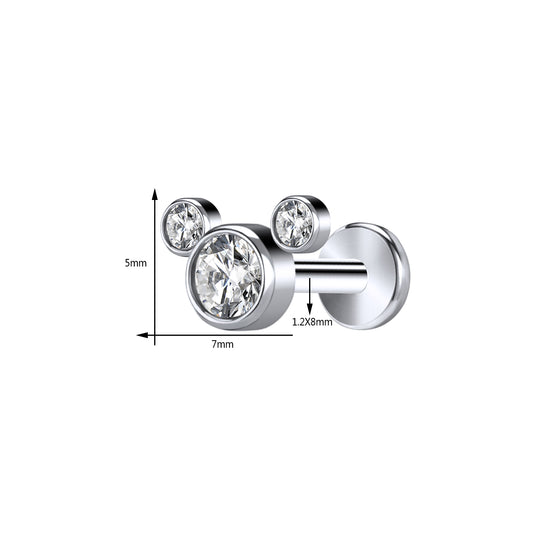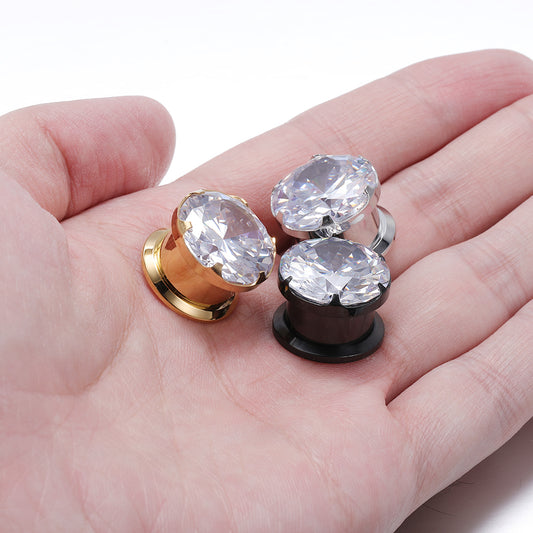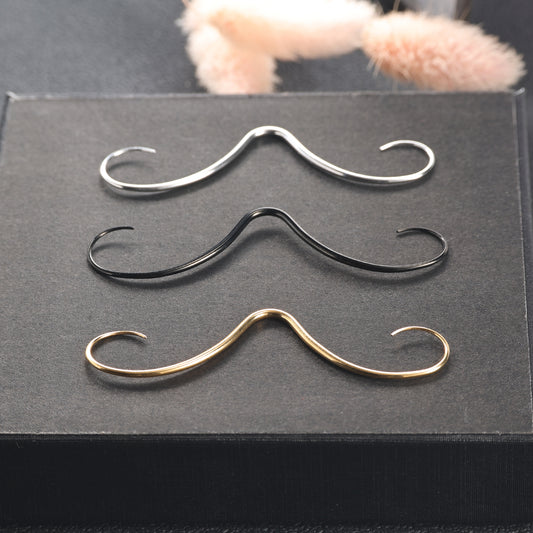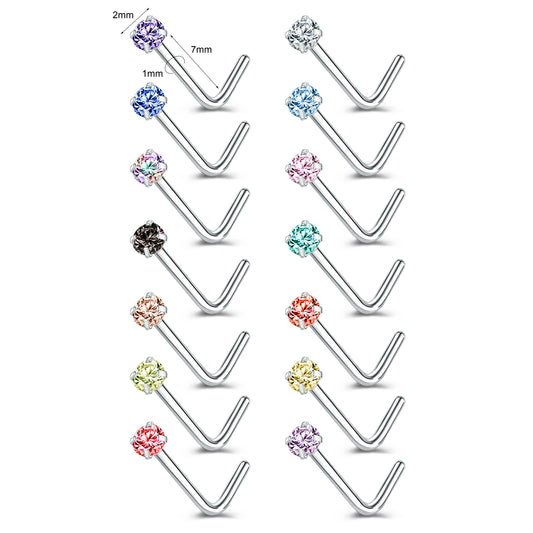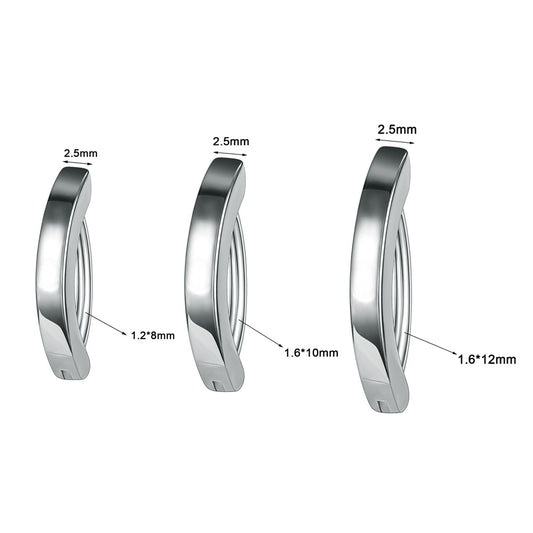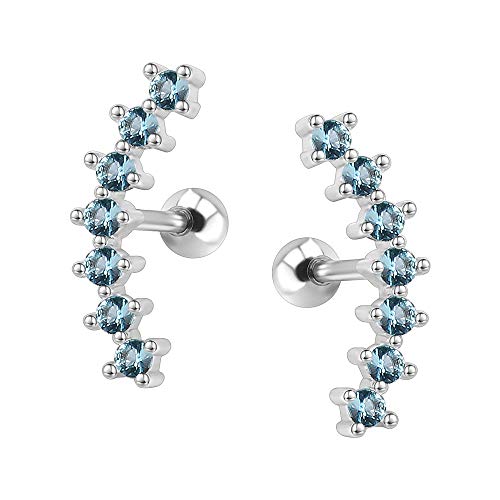Are Silicone Ear Tunnels Safe
Share
Body adjustment patterns are continuously advancing, and Silicone Ear Tunnels stand out quite a large number. These adaptable and practical frills are a hotly debated issue in the body change local area. However, "Are Silicone Ear Tunnels safe?" Silicone ear tunnels are generally safe, but potential risks include allergic reactions and improper sizing leading to discomfort or injury.
Properties of Silicone Ear Tunnels
A. Composition of Silicone
Silicone Ear Tunnels are fundamentally produced using clinical-grade silicone, a manufactured polymer made out of silicon, oxygen, carbon, and hydrogen particles. This material is valued for its adaptability, delicate quality, and biocompatibility. Dissimilar to different materials, for example, metal or acrylic, silicone is delicate on the skin and limits the gamble of bothering or unfavourably susceptible responses.
B. Flexibility and Comfort
One of the champion highlights of Silicone Ear Tunnels is their surprising adaptability. When embedded into extended ear cartilage, they adjust to the normal forms of the ear, giving a cozy fit. This adaptability guarantees that the passages adjust to development without causing uneasiness. Whether you're gesturing your head to music or just approaching your day, Silicone Tunnels stay agreeable.
C. Hypoallergenic Properties
Silicone is an incredible decision for people with delicate skin or sensitivities. In contrast to certain metals (seeing you, nickel!) that can set off unfavourable responses, silicone is hypoallergenic. It doesn't contain normal allergens, making it reasonable for those inclined to skin-responsive qualities. Whether you're a carefully prepared cot or a beginner investigating ear extending, Silicone Tunnels offer the inward feeling of harmony.
D. Durability and Longevity
Silicone Ear Tunnels are shockingly solid. They endure day-to-day wear, openness to dampness, and temperature changes. Dissimilar to natural materials like wood or bone, silicone doesn't twist, break, or corrupt without any problem. Whether you're swimming, showering, or sunbathing, your silicone passages will hold up. Furthermore, they're not difficult to clean — essentially wash them with gentle cleanser and water.
Safety Concerns of Silicone Ear Tunnels
A. Potential Allergic Reactions
Silicone Tunnels are leaned toward for their adaptability and lightweight nature, making them an agreeable choice during the ear-extending process. In any case, concerns have been raised seeing potential issues like aggravation and smell. A few people might encounter gentle unfavorably susceptible responses to silicone, particularly if they have delicate skin or a background marked by sensitivities.
B. Risk of Infection
One of the essential security worries with Silicone Tunnels is their permeable nature. Dissimilar to materials like hardened steel, silicone can trap dampness and sweat, making it an optimal favorable place for microorganisms. While possibly not appropriately cleaned and kept up with, silicone passages might hold onto microorganisms, prompting diseases. To limit this gamble, observe these rules:
- Consistently perfect your Silicone Tunnels with gentle cleanser and water.
- Try not to wear moist passages for expanded periods.
- Keep your extended ear cartilage dry and all-around ventilated.
C. Issues with Sizing and Fit
Accomplishing the right fit is critical for Silicone Tunnels. Assuming the passages are excessively close, they can cause distress, tingling, and even tear or stretch the ear cartilage. Then again, excessively free passages might get out or become removed. Legitimate estimating guarantees an agreeable and secure fit. You can do this:
- Measure your extended ear cartilage precisely before buying Silicone Tunnels.
- Pick burrows that fit cozily without coming down on the skin.
- Routinely take a look at the fit and change depending on the situation.
D. Long-Term Effects on Ear Health
While Silicone Tunnels are by and large safe for transient use, their drawn-out impacts on ear well-being stay a subject of conversation. A few people report changes in the flexibility of their ear cartilage after some time. As Silicone Tunnels stretch and agree, they might lose their unique shape, prompting distress. To keep up with sound ear cartilage:
- Try not to wear Silicone Tunnels persistently for broadened periods.
- Enjoy reprieves from wearing passages to permit your ear cartilage to recuperate.
- Consider turning between various materials (like hardened steel or wood) to lessen the burden on the tissue.
Factors Affecting Safety for Silicone Ear Tunnels
1. Quality of Materials
Silicone Tunnels are a famous decision for ear extending because of their adaptability and lightweight nature. Nonetheless, not all Silicone Tunnels are made equivalent. Great silicone is fundamental for protected and agreeable wear. Search for burrows produced using clinical-grade silicone, which limits the gamble of skin aggravation and hypersensitive responses. Sub-par materials might contain hurtful added substances or pollutants, so consistently pick trustworthy brands.
2. Proper Cleaning and Maintenance
Silicone Tunnels are permeable, and that implies they can trap dampness and sweat. Tragically, this additionally makes them an optimal favorable place for microbes. Ordinary cleaning is fundamental to forestall contaminations. This is the way to keep up with your Silicone Tunnels actually:
Delicate Cleaning: Utilize gentle cleanser and warm water to clean your passages. Stay away from unforgiving synthetic substances that could harm the material.
Drying: After cleaning, guarantee your passages are dry before reinserting them. Dampness supports bacterial development.
Avoid Overstretching: Extending your ears excessively fast can prompt tears or distress. Progressively increment the size of your passages to stay away from the pointless weight on your ear cartilage.
3. Correct Sizing and Insertion Techniques
Legitimate estimating is basic for both solace and well-being. This is the very thing that you want to be aware of:
Pick the Right Size: Silicone Tunnels come in different breadths. Select a size that fits cozily but doesn't choke your ear cartilage. Too close can cause distress, while too free may prompt extending issues.
Addition Procedures: Be delicate while embedding your passages. Grease up them with water-based oil or jojoba oil to facilitate the interaction. Try not to compel them in, as this can cause twisting or tearing of the ear cartilage.
Abstain from Overextending: Continuously increment the check size over the long haul. Surging the interaction can hurt your ears.
4. Individual Skin Sensitivity
Everybody's skin responds distinctively to materials. While silicone is for the most part hypoallergenic, a few people might in any case encounter responsiveness. On the off chance that you have a background marked by skin sensitivities, consider doing a fix test before focusing on Silicone Tunnels. Apply a little piece of silicone to your skin (ideally behind your ear) and notice any responses more than 24 hours. Assuming that everything is great, you're all set!
Final Thoughts
To wrap up, Silicone Ear Tunnels accompany their arrangement of benefits and likely dangers. They're agreeable, reasonable, and hypoallergenic, however, they can likewise hold onto microorganisms prompting diseases. Consequently, cleanliness and care are essential while utilizing Silicone Ear Tunnels.















